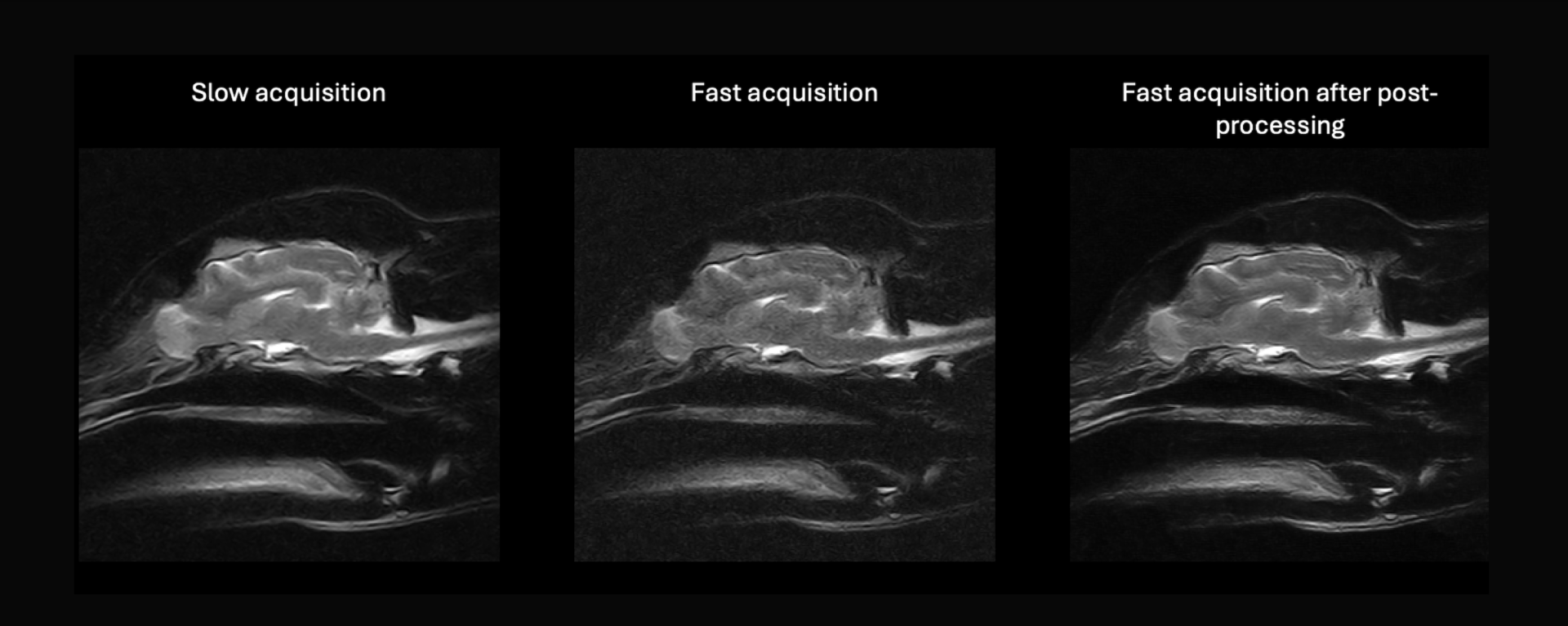Abstract
Magnetic resonance imaging (MRI) has changed veterinary diagnosis but its long-sequence time can be problematic, especially because animals need to be sedated during the exam. Unfortunately, shorters can times implies a fall in overall image quality and diagnosis reliability. Therefore, we developed a Generative Adversarial Net-based denoising algorithm called HawkAI. In this study, a Standard-Of-Care (SOC) MRI-sequence and then a faster sequence were acquired and HawkAI was applied to the latter. Radiologists were then asked to qualitatively evaluate the two proposed images based on different factors using a Likert scale (from 1 being strong preference for HawkAI to 5 being strong preference for SOC). The aim was to prove that they had at least no preference between the two sequences in terms of Signal-to-Noise Ratio (SNR) and diagnosis. They slightly preferred HawkAI in terms of SNR (confidence interval (CI) being [1.924–2.176]), had no preference in terms of ArtifactsPresence, Diagnosis Pertinence and Lesion Conspicuity (respective CIs of [2.933–3.113], [2.808–3.132]and [2.941–3.119]), and a very slight preference for SOC in terms of Spatial Resolution and ImageContrast (respective CIs of [3.153–3.453] and [3.072–3.348]). This shows the possibility to acquire images twice as fast without any major drawback compared to a longer acquisition.


